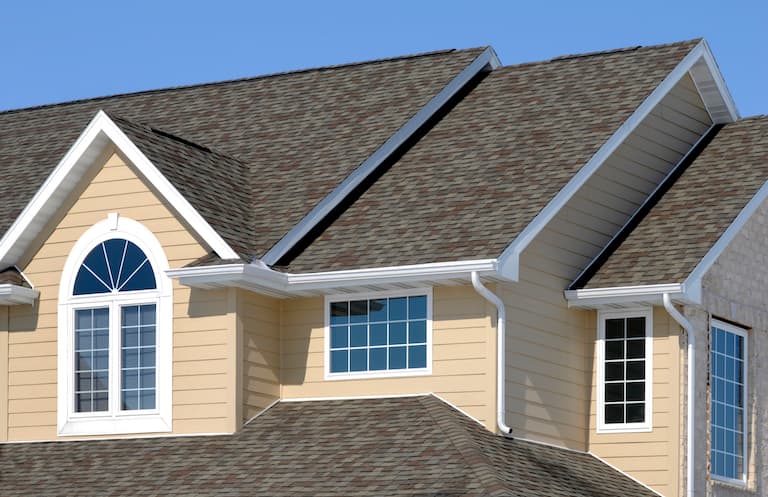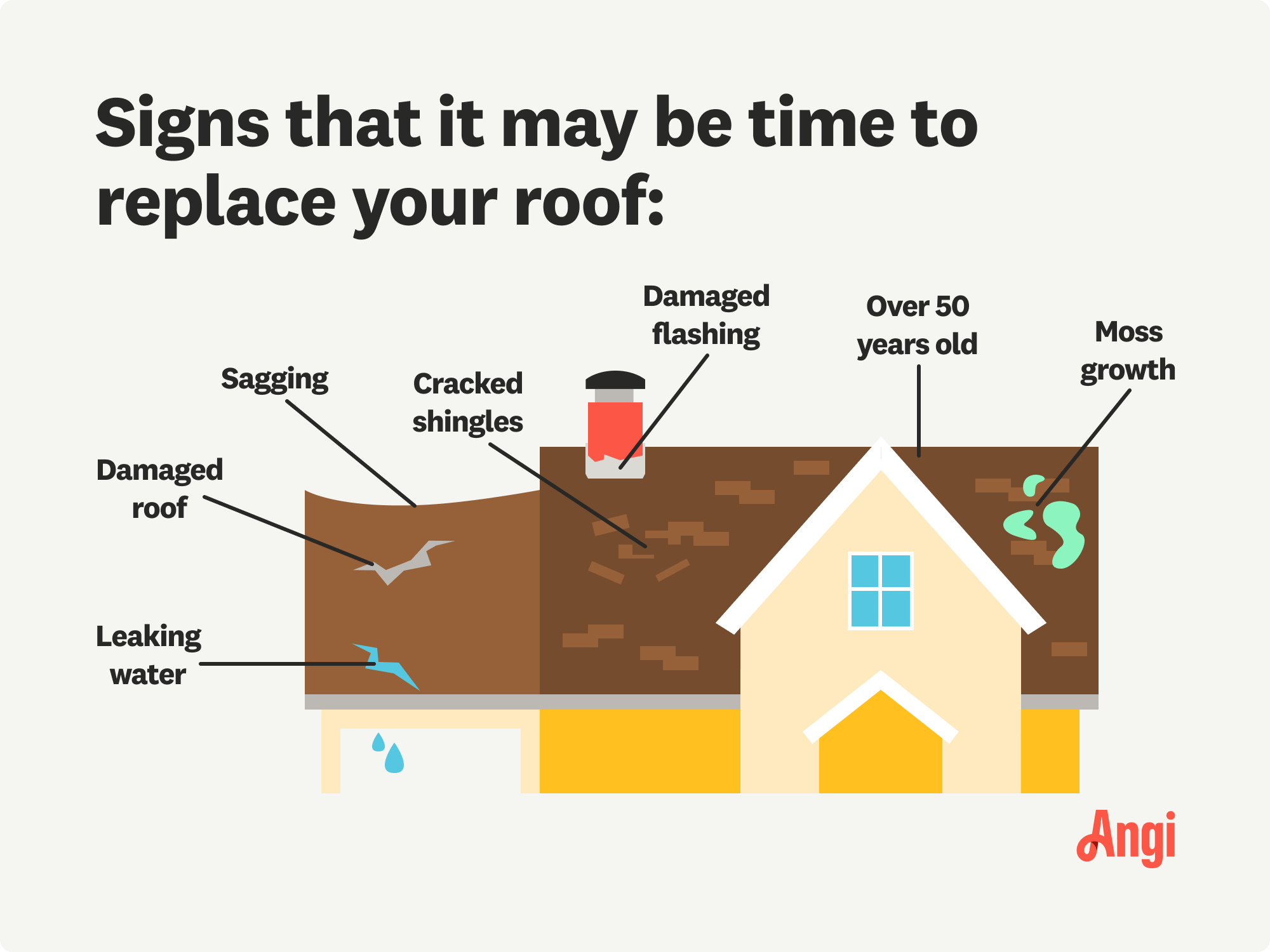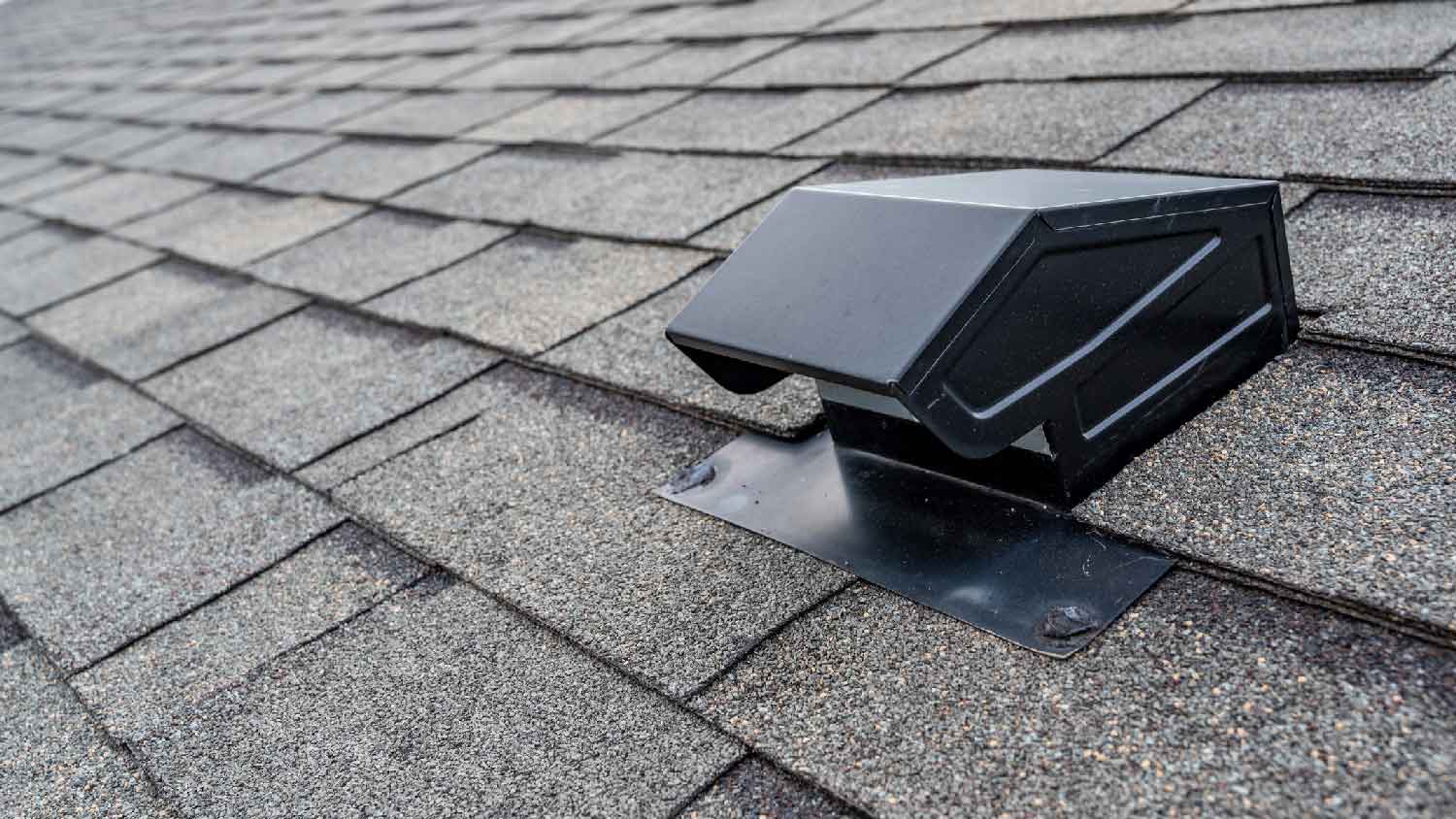
A standing seam metal roof is a long-lasting, durable option for your home. Learn how much a standing seam metal roof costs and what can affect the price.
Signs you may need a new roof may not be as obvious as you might think


Any signs of leaking, including wet drywall, damaged insulation, and increased humidity indoors, could indicate a roof leak.
If your roof is older, shows signs of damage, or looks like it’s sagging or drooping, consider calling in a roofer.
Seeing daylight from the inside of the attic or noticing unusually high heating and cooling bills could mean a roof replacement is imminent.
Seeing vegetation growing on your roof doesn’t necessarily mean it needs replacing, but it probably needs a good cleaning.
A sturdy roof keeps you and your family safe and at ease, so damaged shingles or growing moss patches might cause some concern when you first spot them. But before you start panic-calling roofing companies, do a little more digging into the problem. Knowing the signs you need a new roof can help you identify damage early and prevent more serious and expensive repairs.
Recognizing early warning signs is important, but figuring out the right fix isn't always simple. Delaying professional help or attempting complex DIY repairs can lead to further damage and increased costs. With our network of local pros, you can hire a skilled professional to assess the issue and recommend the best solution.
Your roof is your home’s first line of defense against the elements, so a damaged roof can very quickly lead to serious problems and expensive repairs inside your house. Not only can roof issues cause water damage and reduce your home’s efficiency and indoor comfort level, but ongoing roof leaks can also promote mold growth, reducing your indoor air quality and creating hazardous conditions in your living area.
There are a few key things you should look out for in and around your home that can indicate that you need a new roof.

The life expectancy of any roof will depend on what material it’s made of. The following roof lifespan guidelines come from the United States Department of Housing and Urban Development (HUD) and the International Association of Certified Home Inspectors (InterNACHI).
| Roofing Material | Expected Lifespan |
|---|---|
| Asphalt | 20–50 years |
| Clay or concrete | 50–100 years |
| Metal | 40–80 years |
| Slate | 60–175 years |
| Wood | 25–30 years |
If your roof is getting up there in age for its type, it’s probably time to call a local roofing company to get an estimate for a replacement. You can either replace your roof completely or, if you have an asphalt shingle roof, overlay the existing shingles (provided you only have one existing layer).
Replacing your roof a bit preemptively—a few years before the end of its expected lifespan—can help avoid more expensive repairs from ongoing issues, like damaged roof decking, attic insulation, drywall, and other interior building materials.
Even if your roof isn’t reaching the end of its life, it’s worthwhile to do a visual inspection every couple of years to check for worrisome damage and signs you need a new roof. Exterior damage can show up in the form of asphalt shingles that are curling or buckling. Keep an eye out for missing shingles, too.
As you examine your roof, pay close attention to areas more prone to damage and where materials meet to create seams. These can include the portions of your roof that sit underneath overhanging tree branches, the valleys between slopes, and the seams where roofing material meets exterior walls, chimneys, or roof vents. If you spot damage in any of these areas, you might have hidden leaks.
You should also check out your gutters and downspouts, as well as the fascia boards behind your gutters. If you notice excessive roof grit in your gutters, it’s a good bet that your roof is wearing away. “If you have a lot of granules coming off, it can be indicative of hail damage. Ask your roofing professional if they notice any hail damage since it might be worth opening up a claim for coverage on the roof replacement,” says Feller.
You may notice cracks in your shingles, even from the ground, especially on clay, concrete, and slate roofs. From far away, they may not seem like a big deal; you assume the shingle’s integrity is intact. But that’s not usually the case.
Cracked shingles are like an open window to your attic, ceilings, and walls. They can happen during strong winds and rainstorms or from holding excessive weight from snow and ice. Roof shingles can also crack under a person's weight, so if you’ve had a roofing inspector or contractor on your roof recently or you had solar panels installed, look carefully for signs of cracks.
Damaged shingles can allow water from rain, snow, and ice to enter the roof’s deck. A roofing contractor may be able to fix a few damaged shingles, but if it gets out of hand, you may need an entire roof replacement, or you risk the integrity of your home.
Droopy or saggy spots are a sure sign your decking (the support structure that holds the roof up) is weak from ongoing exposure to moisture, which usually indicates that the roof needs replacement.
You might notice dips in the middle of your roof slopes, but pay close attention to the eaves, as well. Any waviness in the roofline could indicate underlying water damage.

Flashing is a type of roofing material that makes a water-tight seal around the chimney and other roof penetrations. Often consisting of aluminum or steel, the flashing can last 30 years. But if this rusts or cracks, water can seep into the gaps around your chimney. A local roof inspector can tell you if the flashing needs fixing if you’re unable to inspect it yourself.
One of the easiest ways to tell if you need a new roof is to look in the attic if you have access. You shouldn’t be able to see daylight coming through the roof boards—if you do, you have a problem.
While you’re poking around in your attic, check for any sign of moisture, too. Water stains on the roof boards or moisture in the insulation are indicative of a leaky roof. You might also find signs of mold growth or notice a musty odor. All of these signs could indicate roof leaks that need immediate attention.
Some of my drywall damage was caused by a water leak. When Tom saw the damage, he went up on the roof to see where the water was coming from. Once up there, he found a rotted area in the roof that was a hidden problem that would soon have caused some major damage. He brought in experienced roofers and fixed this issue as well.
— Mark T., The Home Specialist, Virginia Beach, VA
Moss growth on your roof doesn’t necessarily mean you need to replace it, but it is a sign that you could have more severe damage underneath, especially if the moss has been growing there for a long time. Moss is most common on shaded areas of the roof. It holds moisture against the roofing material and lifts up the edges of your shingles as it grows. Both of these issues mean a higher risk of roof leaks.
You might also notice vegetation growing in your gutters, which is a sign that the gutter system is backed up and needs cleaning. The plant life itself is unlikely to cause roof damage, but it’s an indication of a clog, which means runoff could be building up in your gutters and pouring over the sides, potentially damaging your fascia boards and soffits.
You can clean your roof yourself with a ladder, a store-bought cleaning solution, a broom, and a hose, or find a roof cleaning company in your area.
A leaking roof can cause water damage to the roof itself and the ceiling and walls inside the home. Signs of water damage include the following:
Water stains or mold spots on the ceiling and walls inside your home
Increased humidity in your home
Unusually high heating and cooling bills
Uncomfortable temperatures in your living space
Increased signs of pest infestation
Missing or broken shingles
Damaged roof flashing
Dirty or clogged gutters
If you spot any of these signs, it’s important to order a professional roof inspection as quickly as possible to identify and fix the problem. To save time, you should also contact a local roof repair company to get an estimate for your repair or replacement.
In some neighborhoods, and especially in homeowner’s associations (HOAs), many of the houses are the same age, so if you see your neighbors beginning to replace their roofs, it could be a sign that yours should be next. You can look around for other signs that your roof is nearing the end of its lifespan or call a roofer to check it out and make recommendations.
If you start to notice granules falling off of your shingles, it might be time to replace them. Small amounts of granules falling off are to be expected due to wear and tear, but if large quantities begin falling off, it can be a sign that your shingles are nearing the end of their useful life. Call a roof inspector to how soon you should replace your roof.
If you see any daylight at all coming through your roof boards, this is a strong sign that your roof needs repairs, if not a full replacement. Your roof should never have cracks that allow light or precipitation to come through. If you notice any daylight coming through your roof boards, call a professional roofer right away to have them assess the damage and give advice on what to do.
If you’ve gone through the list above and signs point toward needing a new roof, a roofer can assess your current situation and make recommendations for a total or partial repair or a replacement.
You also have the option of first calling in a roof inspector to get a professional and unbiased opinion of what kind of repair or replacement would benefit you most. A roof inspection costs around $240, on average, but it’s good to have an expert’s opinion on the best course forward before you get estimates from roofers.
If you or an inspector determines that a repair or replacement is in your best interest, you should default to hiring a professional. Working on a roof is not only dangerous, but it’s easy to make mistakes if you don’t know what you’re doing. Without experience with roof repair or installation, you could make mistakes that lead to additional leaks and ongoing damages, and that DIY repair could cost you thousands more over time.
Additionally, a roof warranty is a great way to avoid long-term roof issues, and you’ll only get a warranty from an experienced professional.
If you’re keen on doing some of the work yourself, you could coordinate removing the old roofing material and hauling it away. Overall, it’s best to leave actual roof work to professionals.
The most commonly sought-after asphalt shingle roof repair involves fixing water leaks. Homeowners also want recommendations from a roofer for repairs that prevent damage and keep their roofs in good condition. Other issues include broken, missing, cracked, and loose shingles, water stains, and other related problems.
If your roof is still in good shape (or you’re starting fresh with a new one) it’s important to know that you can prevent many of the issues listed above with routine maintenance.
First, it’s a good idea to schedule annual inspections, especially as your roof gets older, so you can catch problems before they become severe. You can schedule roof cleaning services around the same time to prevent moss growth and related moisture damage and maximize your curb appeal.
You can also apply a waterproofing sealant to your roof every few years. “A sealant helps protect roofs against the weather and even helps increase their lifespan,” says Mark Soto, professional roofer at Roofing MKE. “As a rule of thumb, roofs should be sealed every five years. Another way to prevent roof leaks is to trim tree branches that rest close to the roof. During storms, branches will often fall off and cause a hard impact on the roof, which can damage shingles and create openings for water to pour in.”
The average cost to repair a roof is around $1,100. Most homeowners pay somewhere between $150 and $7,800, depending on the extent of the damage and type of repair. Even at the high end, roof repair is less than the average cost to replace a roof, which sits at around $9,400. Replacements can total anywhere from $500 to $46,000, though, depending on the roof size and the roofing material.
In some cases, a replacement will be more cost-effective than a repair, even if the upfront cost is higher. You should have a professional roofing company inspect your roof to see which is a better fit for you now and in the long term.
From average costs to expert advice, get all the answers you need to get your job done.

A standing seam metal roof is a long-lasting, durable option for your home. Learn how much a standing seam metal roof costs and what can affect the price.

The cost of 3-tab shingles varies widely, depending on the size, condition, and steepness of your home's roof. Discover how much they'll cost for yours.

Knowing your home's roof underlayment replacement cost can help estimate the cost of roof replacement. Learn about the factors that affect prices.

There is a calculation for how many soffit vents you need, depending on your square footage. Discover where to install them and what happens to your attic air during winter.

Painting a metal roof helps it look great and last for decades. Use this guide to learn how to paint a metal roof, whether you DIY the job or hire a pro.

This guide lays out the cost to install a roof vent on your home depending on the type of ventilation that's best for your roof based on several factors.